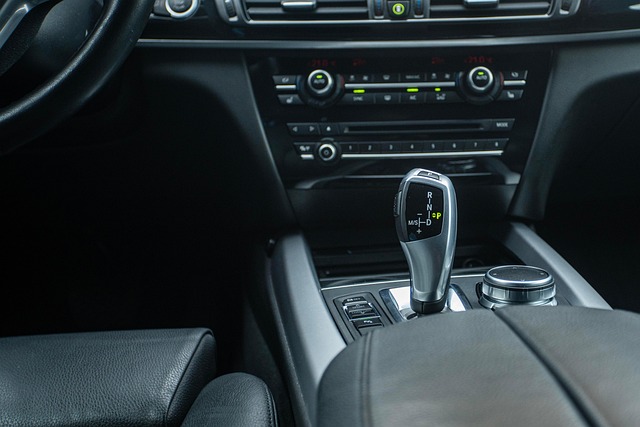# The Future of AI Technology: How Emerging Innovations Are Redefining Our World Today
Artificial Intelligence (AI) is no longer just a concept confined to science fiction; it is a transformative force reshaping various industries, particularly the automotive sector. As we stand on the brink of a new era in transportation, the integration of AI in the automotive industry is revolutionizing how vehicles are manufactured, maintained, and experienced. This article delves into the key areas where AI is making a significant impact, including smart manufacturing, predictive maintenance, autonomous vehicles, supply chain optimization, and intelligent user experiences.
## Smart Manufacturing
The automotive industry has embraced AI to enhance manufacturing processes, leading to increased efficiency and reduced costs. Smart manufacturing involves the use of AI algorithms and machine learning to optimize production lines, manage resources, and improve quality control.
– **Real-World Example:** Tesla’s Gigafactories utilize AI-driven robotics to streamline the assembly process. These robots can adapt to changes in production demands, ensuring that Tesla can scale operations quickly without compromising quality.
– **Benefits of Smart Manufacturing:**
– Increased production speed and efficiency.
– Enhanced quality control through AI-driven inspections.
– Reduced waste and resource consumption.
## Predictive Maintenance in Vehicles
Predictive maintenance is a game-changer in vehicle upkeep, leveraging AI to predict potential failures before they occur. This technology allows manufacturers and service providers to monitor vehicle health in real-time, reducing downtime and maintenance costs.
– **How It Works:** AI algorithms analyze data from vehicle sensors to identify patterns and anomalies. This predictive analysis helps in scheduling maintenance before a breakdown happens.
– **Real-World Example:** BMW has implemented predictive maintenance systems in its vehicles. By using AI to analyze driving patterns and vehicle performance, BMW can alert drivers about potential issues, ensuring timely repairs and enhancing safety.
– **Benefits of Predictive Maintenance:**
– Reduced repair costs and downtime.
– Improved vehicle reliability and safety.
– Enhanced customer satisfaction through proactive service.
## Autonomous Driving Innovations
Autonomous vehicles are perhaps the most talked-about application of AI in the automotive industry. Companies are investing heavily in developing self-driving technology that promises to redefine transportation.
– **Levels of Autonomy:** Autonomous driving innovations are categorized into five levels, from fully manual to fully autonomous. Companies like Tesla and Waymo are at the forefront of developing Level 4 and Level 5 autonomous vehicles, which can operate without human intervention in specific conditions.
– **Real-World Example:** Tesla’s Autopilot feature uses AI to enable semi-autonomous driving. The system continuously learns from millions of miles driven by Tesla vehicles, improving its ability to navigate complex environments.
– **Benefits of Autonomous Driving:**
– Reduced traffic accidents caused by human error.
– Increased mobility for individuals unable to drive.
– Enhanced efficiency in traffic flow and reduced congestion.
## Supply Chain Optimization
AI is also revolutionizing supply chain management in the automotive industry. By analyzing vast amounts of data, AI can optimize logistics, inventory management, and supplier relationships.
– **How It Works:** AI algorithms evaluate data from various sources, including market trends, weather patterns, and consumer demand, to make informed decisions about supply chain operations.
– **Real-World Example:** Toyota employs AI to enhance its supply chain efficiency. The company uses predictive analytics to anticipate supply chain disruptions and adjust production schedules accordingly, ensuring that vehicles are manufactured and delivered on time.
– **Benefits of Supply Chain Optimization:**
– Increased efficiency and reduced costs.
– Enhanced responsiveness to market changes.
– Improved collaboration with suppliers and partners.
## Intelligent User Experiences
AI is not just transforming the backend of the automotive industry; it is also enhancing the user experience for drivers and passengers. Intelligent user experiences involve the integration of AI in infotainment systems, voice recognition, and personalized services.
– **How It Works:** AI systems analyze user preferences and behaviors to provide tailored experiences, from personalized navigation to adaptive climate control.
– **Real-World Example:** Mercedes-Benz has integrated AI into its MBUX infotainment system, which uses natural language processing to understand and respond to voice commands, creating a more intuitive driving experience.
– **Benefits of Intelligent User Experiences:**
– Enhanced convenience and comfort for drivers and passengers.
– Improved safety through hands-free operation of systems.
– Increased customer loyalty and satisfaction.
## Conclusion: The Road Ahead
As AI continues to evolve, its impact on the automotive industry will only grow. Future trends may include even more advanced autonomous driving capabilities, enhanced connectivity between vehicles, and further integration of AI in smart manufacturing and maintenance.
The automotive industry is on the cusp of a revolution, driven by AI technologies that promise to enhance safety, efficiency, and user experience. As companies like Tesla, BMW, and Toyota lead the charge, the future of transportation looks not only smarter but also more sustainable. Embracing these innovations will be crucial for manufacturers and consumers alike as we navigate this exciting new landscape.
With the ongoing advancements in AI, the automotive industry is set to redefine our world, making travel safer, more efficient, and more enjoyable than ever before.











